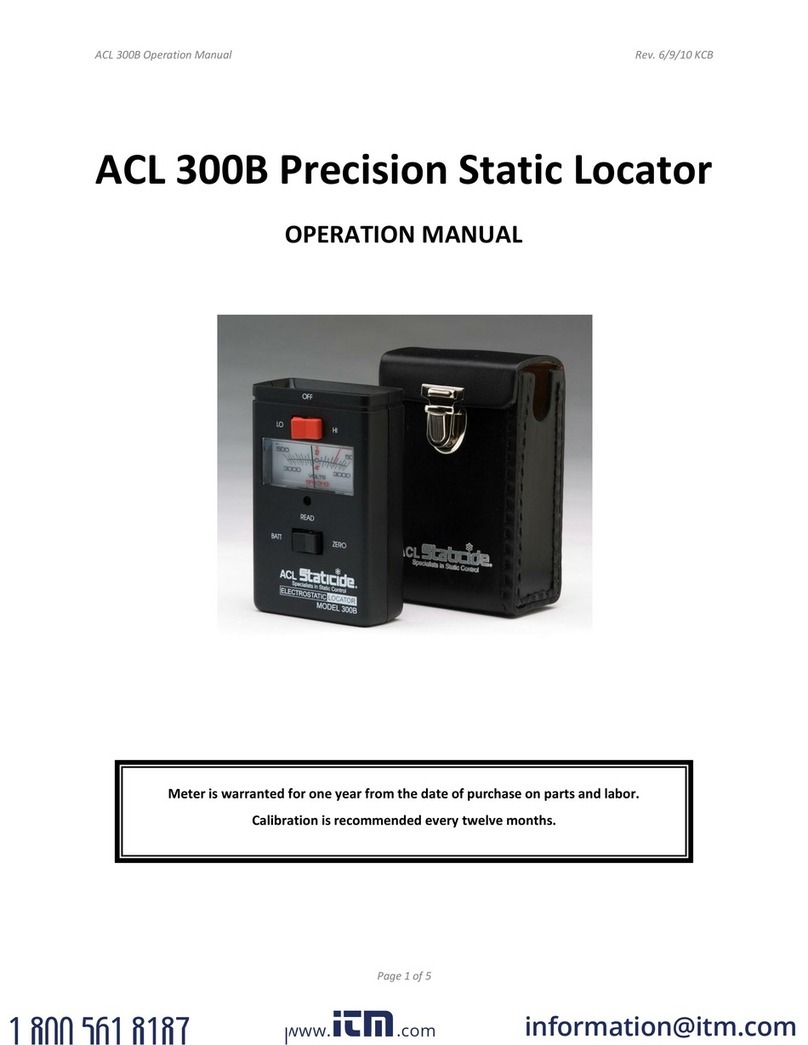
ACL 395 Operation Manual Rev. September 26, 2019 MKB
Page 4 of 14
TEST VOLTAGE
The test voltages are 10v and 100v. According to ESD Association (ESDA) standards S4.1 and
S7.1, 10v should be applied to surfaces with resistivity of less than 106and 100v should be
applied to surfaces with resistivity of 106or greater. The ACL 395 will automatically simulate
the proper voltage according to the test measurement.
As defined by the ESDA, values indicate the following:
ANOTE ABOUT VOLTAGE
In previous years, those desiring to measure resistivity or resistance followed the ASTM D264,
ASTM 991, NFPA 56A or NFPA 99 test standards. These procedures required one to test at either
500 or 1000 volts. This caused concern regarding safety of the person performing the tests. The
ESDA standardized the test procedures so that lower volts could be used within specific ranges.
The ACL 395 meter uses a 9-volt battery. Some meters with 9-volt batteries do not give the
accuracy needed to perform the tests, especially at values higher than 107. The ACL 395 is built
with a transformer that converts the 9-volt charge from the battery to 10 volts or 100 volts. The
meter applies a constant charge over the complete voltage range. Accuracy depends on applied
voltage, temperature, and humidity.
TEMPERATURE AND HUMIDITY
Ambient humidity and temperature affect the electrical properties of the material being tested.
The combination of low humidity and low temperature will give the highest electrical resistance
results and slowest dissipation times. At high humidity, a thin layer of water is condensed on or
absorbed into the material being tested. This is true of hydroscopic additives that are
incorporated into a material in order to increase the electrical conductivity. These additives will
allow moisture to be absorbed into the materials to which they are added.
At elevated temperatures, the mobility of free electrons increases, thereby also increasing a
material’s conductivity. This is especially true for carbon black, metallic oxides, metals, and
other substances. When the material is at a lower temperature, built-in stresses occur which
may increase resistance due to increased distance between the conductive additives. Thus,
humidity and temperature must be known.
www.GlobalTestSupply.com
Find Quality Products Online at: sales@GlobalTestSupply.com




























